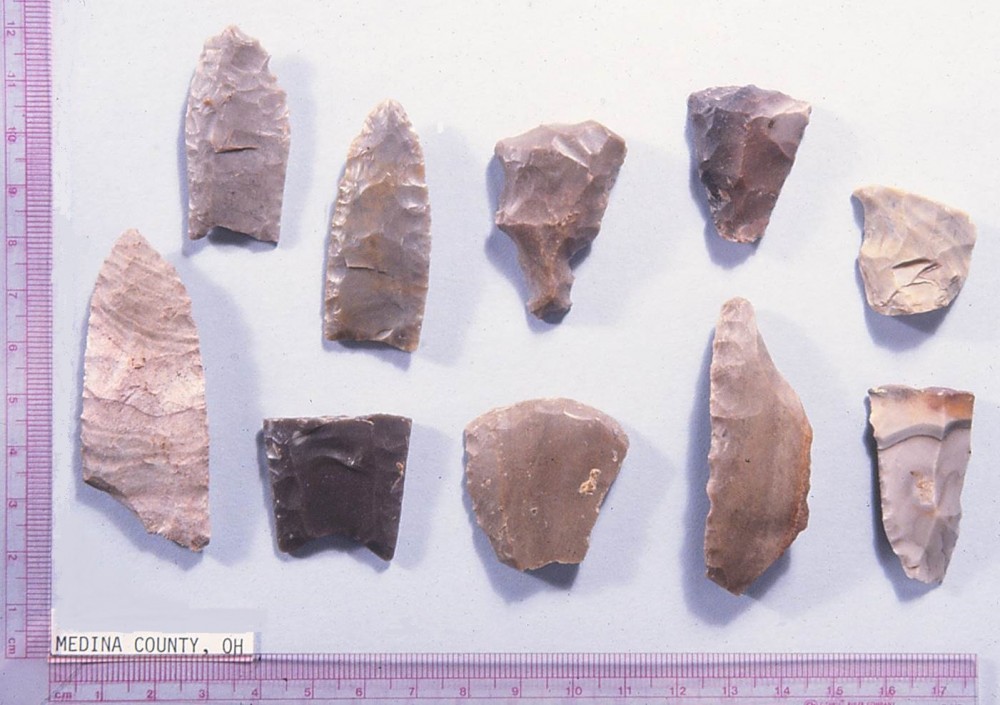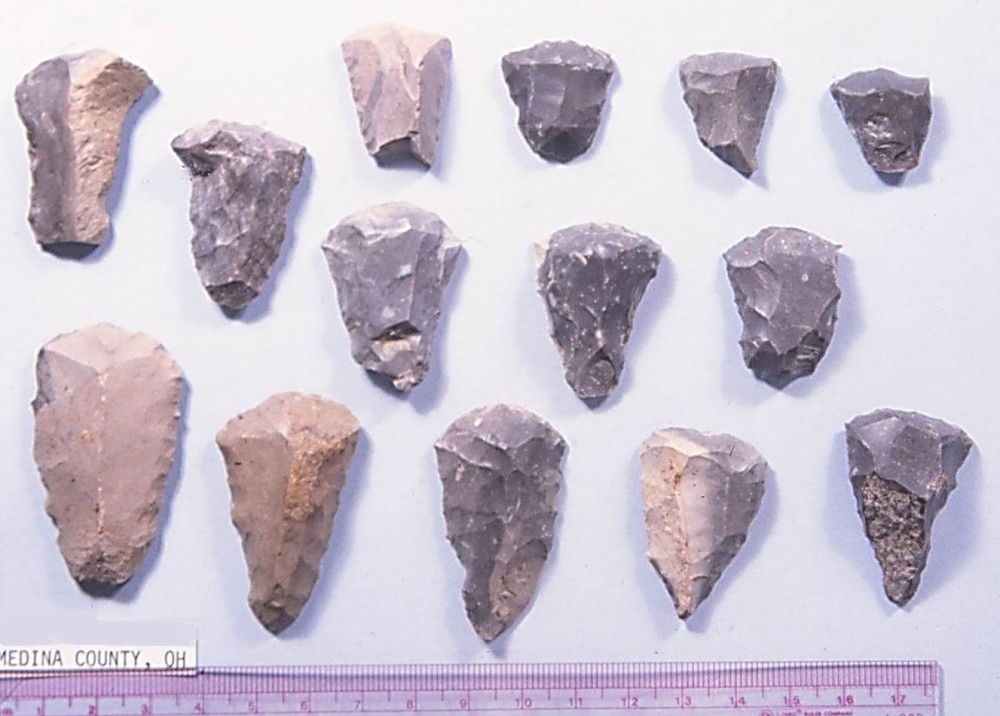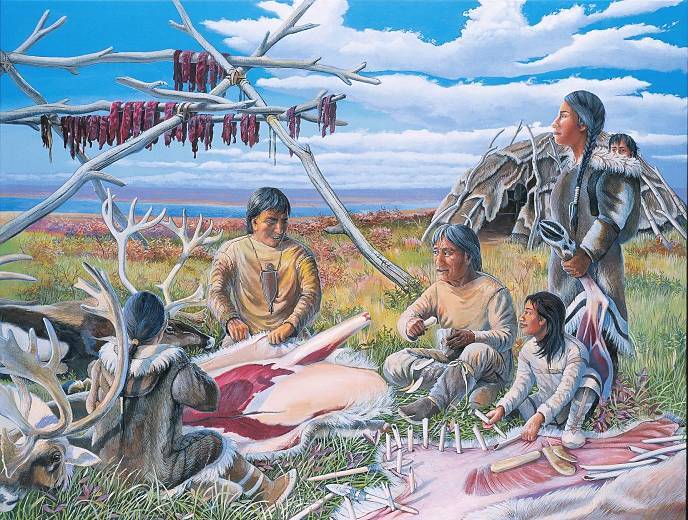
Exceptionally fine Clovis point from Fairfield County, Ohio. It is 138 mm long. A851/011
Clovis points are undeniably special. For one thing, they are among the oldest artifacts in America. (Some archaeologists would remove the qualification and say they are THE oldest, but the evidence and arguments for a pre-Clovis human presence in the Americas are compelling at least to me.) In addition to being really old, 13,000 years old give or take a century or two, Clovis points also are large, beautifully-crafted, often made from high-quality flint, and at least occasionally were used to kill mammoths and mastodons. Because a few have been found in direct association with the bones of these Ice Age behemoths, some archaeologists have imagined that Clovis points were specialized mammoth-killing weapons. In my September column in the Columbus Dispatch, I discuss the conclusions of a recent study of microwear on Clovis tools from Ohio’s Paleo Crossing site by OSU grad student Logan Miller. He determined that one of the Clovis points had been used to cut soft plants.

Selection of Clovis tools from Paleo Crossing
A sample of one isn’t terribly persuasive, but if your argument is that all Clovis points are spears for killing the biggest game ever, then finding even one that not only didn’t kill a mammoth, but was instead used to cut up veggies suggests there may be a problem with your argument. Miller also found microwear evidence for cutting soft plants on an endscraper, a blade, and a knife. Since he only examined 10 tools in this pilot study, that represents 40% of the artifacts analyzed. In his conclusion, he observed that this “high percentage of implements used to cut plant material is a unique feature” of the Paleo Crossing site. The idea that Clovis points weren’t specialized mammoth killers isn’t entirely a new one. Former OHS Curator of Archaeology Henry Shetrone, back in 1936, argued that Clovis points would have served admirably as knife blades and so likely had been put to multiple uses.

Selection of endscrapers from Paleo Crossing. Endscrapers are the most common type of tool found at Clovis sites.
Back in the 1980s, while doing research on Paleoindians for my dissertation, I conducted a series of low-magnification studies of fluted points in the collections of the Ohio Historical Society and the Johnson-Humrickhouse Museum. These were published in the Ohio Archaeologist, the magazine of the Archaeological Society of Ohio an amateur group, which back then was much more welcoming to professionals. In these studies, I concluded that between 43% and 45% of the Clovis points I examined exhibited evidence, such as micro-fracturing or rounding of the edges along the sides of the point, indicating they had been used as something other than, or more than, projectile points. Of course the polishes Miller was able to document using very high-magnifications are much more definitive evidence of how the tools were used than what I was seeing with the low-powered approach. Miller’s results are intriguing and support the idea that Clovis points served as general purpose Boy Scout knives, but as with any pilot study, more research is needed with additional material from both the Paleo Crossing collection and with points and other tools from other Clovis sites, such as Nobles Pond in Stark County. As Miller notes, perhaps there was some particular concentration of choice plant resources in the vicinity of Paleo Crossing that led to an opportunistic flurry of soft plant cutting activity.

Paleoindian camp site. Ancient Ohio Art series, artist Susan Walton
For further reading: Lepper, Bradley T. 1983 Ohio fluted projectile points: a preliminary functional analsis. Ohio Archaeologist 33(1):42-43. 1984 Ohio fluted projectile points: a preliminary functional analysis, Part II the Johnson-Humrickhouse Museum collection. Ohio Archaeologist 34(1):4-12. Miller, G. Logan 2013 Illuminating activities at Paleo Crossing (33ME274) through microwear analysis. Lithic Technology 38(2):97-108. Shetrone, H. C. 1936 The Folsom phenomena as seen from Ohio. Ohio State Archaeological and Historical Quarterly 45:240-256. Brad Lepper